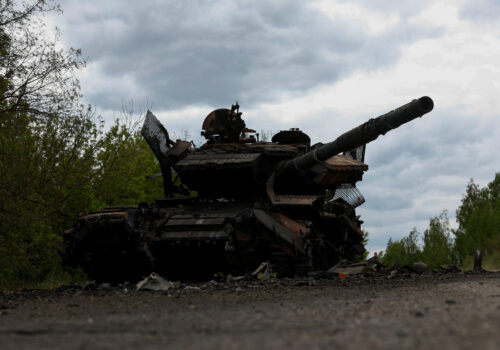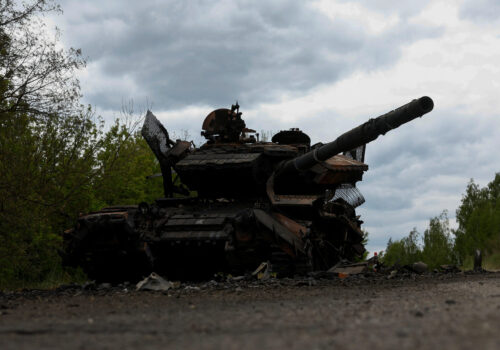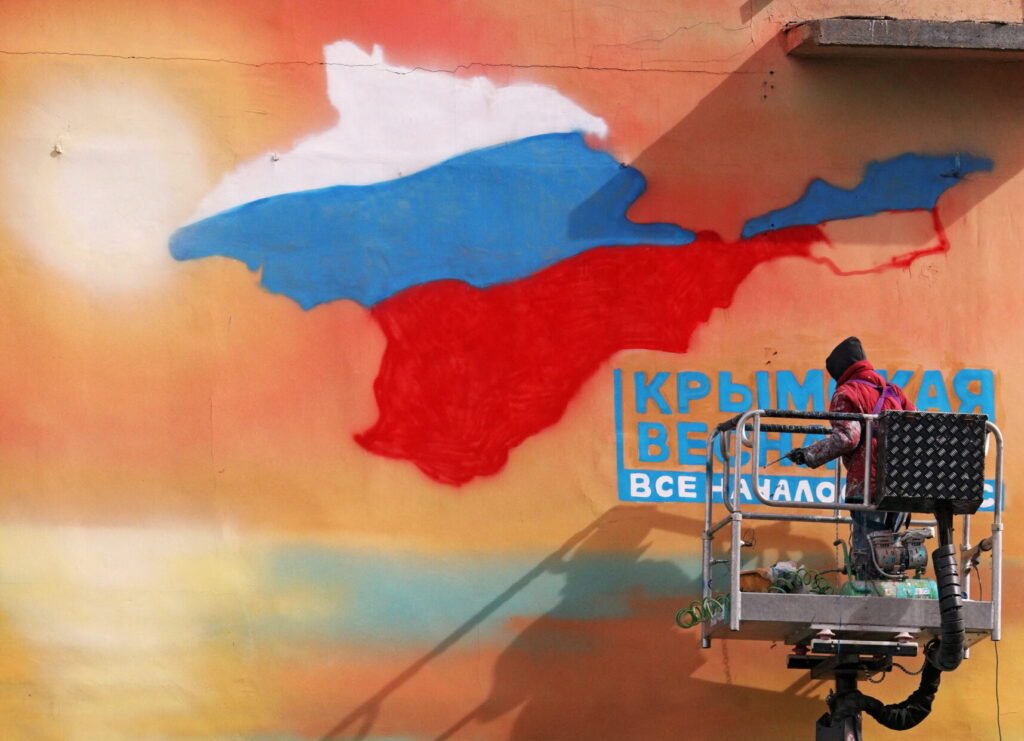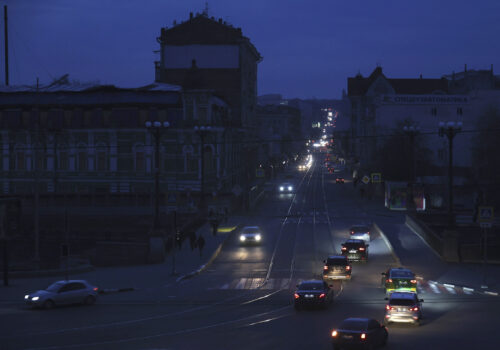
Ukraine is making the Russian occupation of Crimea untenable

A combination of Ukrainian ingenuity and Western-supplied long-range missiles is making the Russian occupation of Crimea increasingly untenable. The continued weakening of Russia’s position on the Crimean peninsula is a major blow to Kremlin prestige that also has potentially serious practical implications for the future of the war.
In recent weeks, long-awaited supplies of US missiles have allowed Ukraine to step up a campaign of air strikes against Russian air defense assets and other military targets throughout the occupied peninsula. This follows on from an earlier series of drone and missile attacks on the Russian Black Sea Fleet, which forced the bulk of Putin’s warships to retreat from Crimea to the relative safety of Novorossiysk in Russia (and the Caribbean).
Stay updated
As the world watches the Russian invasion of Ukraine unfold, UkraineAlert delivers the best Atlantic Council expert insight and analysis on Ukraine twice a week directly to your inbox.
Reports of fresh Ukrainian air strikes on Russian military assets in Crimea are now an almost daily occurrence. On June 10, for example, Ukraine claimed to have struck three advanced Russian air defense systems. Additional high value targets have included Russian airfields, radars, command posts, and communications centers. The majority of recent attacks have been possible thanks to the delivery of ATACMS missiles from the US as part of the military aid bill that was finally passed by Congress in April following months of delays.
In addition to steadily depleting Russia’s defensive capacities, Ukraine also appears intent on isolating Crimea by targeting the Kremlin’s logistical connections to the occupied peninsula. According to Britain’s Ministry of Defense, Ukrainian air strikes in late May damaged two rail ferries on the Crimean side of the Kerch Strait, putting them temporarily out of service. This represented a significant blow as Moscow has grown reliant on these ferry services to resupply its army in Crimea following a series of Ukrainian attacks on the Crimean Bridge connecting the peninsula to Russia.
Ukraine’s recent ferry service attack has reportedly forced Russia to resume the transportation of military supplies and fuel over the vulnerable Crimean Bridge. Moscow has sought to protect the bridge from possible attack by deploying a series of barges in addition to extensive existing defenses. However, the apparent ease with which Ukraine has been able to hit Russian air defenses and logistical hubs throughout Crimea has led some to suggest that the destruction of the Crimean Bridge may now only be a matter of time.
The Kremlin appears to be well aware of this vulnerability. For the past year, Russian engineers have been constructing a series of railway lines running from Russia itself through occupied regions of mainland Ukraine along the coast of the Sea of Azov to Crimea. This should help Moscow maintain connection with the peninsula and supply Russian forces in southern Ukraine, but the new railway routes will also serve as key targets for Ukrainian missiles and saboteurs.
Eurasia Center events

It is now evident that Ukraine’s growing air strike capabilities are placing Russian occupation forces in Crimea in a precarious position. By utilizing Western-provided cruise missiles and domestically produced naval drones, Ukraine has already succeeded in forcing most of the Russian Black Sea Fleet to withdraw from its home port of Sevastopol in Crimea. This has also restricted the ability of Russian warships to operate in the western Black Sea.
The next stage of this effort is now underway, with Ukraine methodically depleting Russian air defenses and exposing the entire peninsula to further attack. Ukraine is expected to receive the first F-16 fighter jets in the coming months, setting the stage for what is likely to be a broader air campaign against Russia’s extensive surviving military infrastructure throughout Crimea. With its air defenses decimated and supply lines under threat, the Russian army in Crimea may soon face the realization that its position is no longer sustainable.
Russia’s declining fortunes in Crimea represent a very personal humiliation for Vladimir Putin. The 2014 seizure of the peninsula marked the start of Russia’s Ukraine invasion and is still widely regarded as the greatest single achievement of Putin’s entire reign. With this in mind, he is likely to resist calls to reduce the Russian military presence in Crimea unless absolutely necessary. Nevertheless, it is already clear that Crimea is no longer the “unsinkable aircraft carrier” it once was. Instead, it is becoming a weak link in Russia’s invasion that Ukraine will continue to exploit.
Olivia Yanchik is a program assistant at the Atlantic Council’s Eurasia Center.
Further reading
The views expressed in UkraineAlert are solely those of the authors and do not necessarily reflect the views of the Atlantic Council, its staff, or its supporters.

The Eurasia Center’s mission is to enhance transatlantic cooperation in promoting stability, democratic values and prosperity in Eurasia, from Eastern Europe and Turkey in the West to the Caucasus, Russia and Central Asia in the East.
Follow us on social media
and support our work
Image: A worker paints words reading “Crimean spring” on a mural at the wall of a building in Simferopol, Crimea. March 12, 2024. REUTERS/Alexey Pavlishak




